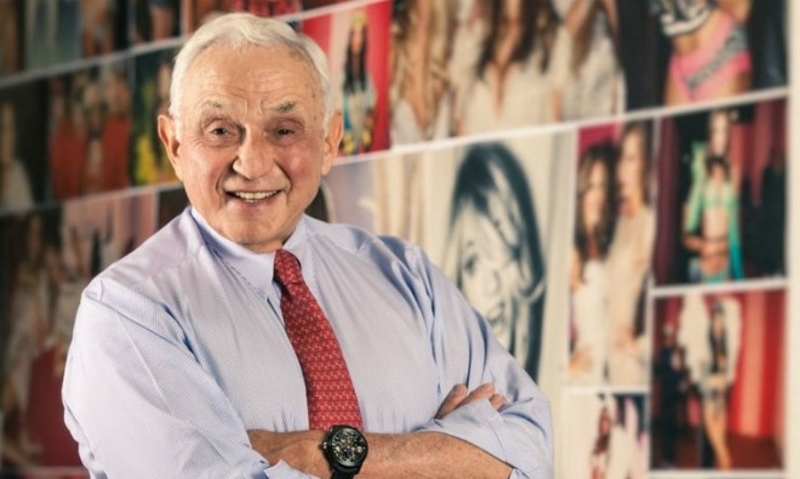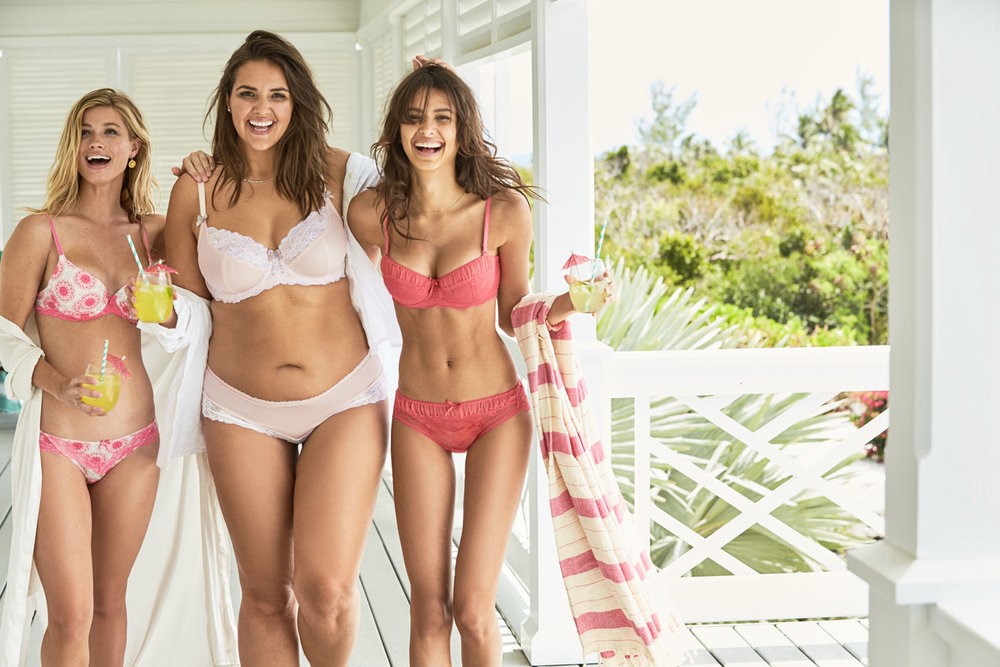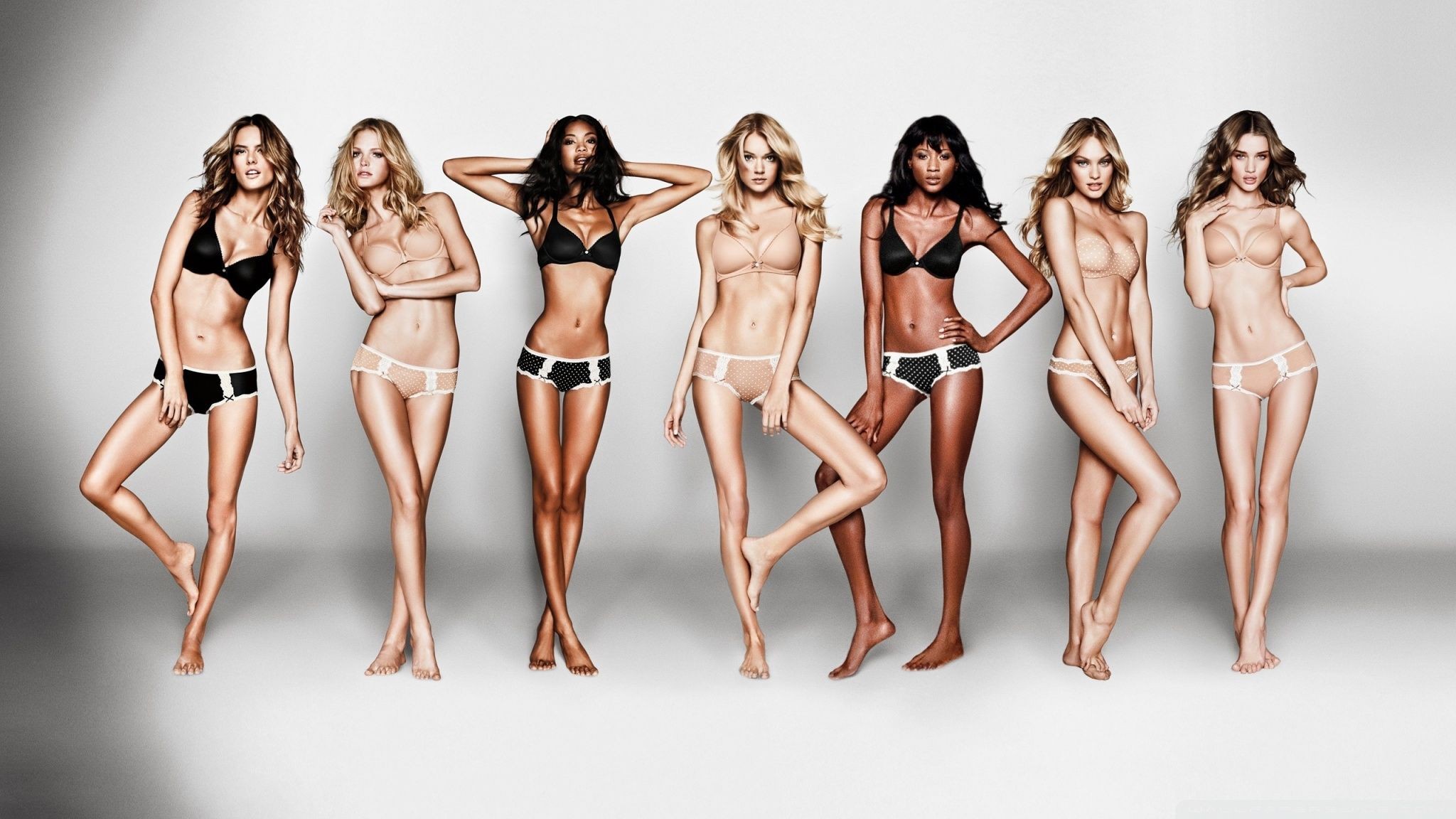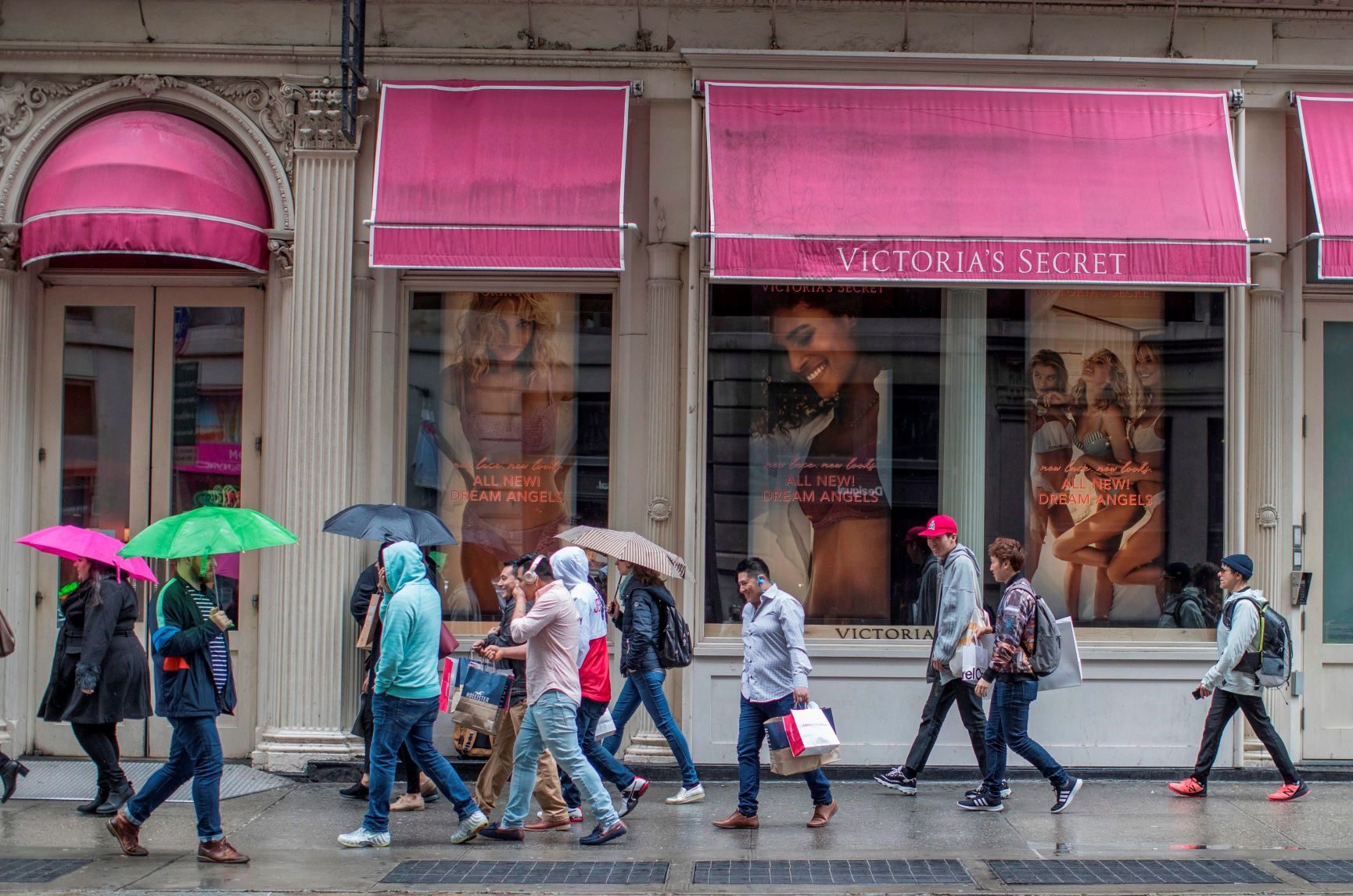How Victoria’s Secret Revolutionized Lingerie and Then Fell Behind?
Every year, the Victoria’s Secret fashion show broadcasts to millions of viewers. A flurry of top models called ‘Angels’ strut down the runway in sexy lingerie next to famous pop stars belting their best songs. It’s a visual celebration of the top lingerie retailer in the United States, which consistently captures around 60 percent of the market.
But lately, Victoria’s Secret seems to be losing some of its magic. Just look at the fashion show’s ratings, which have steadily fallen since 2011 to historic low of 3.3 million in 2018. There’s a widening chasm between what Victoria’s Secret sells as sexy and what most women look like. And between Victoria’s Secret products and what most women want in bras and underwear. Victoria’s Secret’s annual same-store sales have fallen three years in a row, and the stock value of its parent company, L Brands, fell by 55 percent in 2018.
So what was the secret to Victoria’s prior success? And will they find it again?
Victoria’s Secret Once the Most Buzzed-About Apparel Brand in the U.S
Victoria’s Secret is one of several brands owned by the parent company L Brands. Victoria’s Secret is the largest retailer under L Brands, making up around 60 percent of the company’s total sales. And 35 percent of that is just bras. This L stands for The Limited, the name of the company’s first brand. Entrepreneur Leslie Wexner founded The Limited in 1963 as a clothing store that brought the fashion ability of Europe and America’s coastal cities to the women of the Midwest. By 1979, The Limited had gone public and opened 318 stores across the nation. In the early 1980s, Wexner visited one of his stores in San Francisco. While there, he stumbled upon a curious shop: a lingerie retailer called Victoria’s Secret.
See, retail of ladies’ undergarments today is very different than how it used to be. American women typically viewed their undergarments on a binary: strictly functional for day-to-day or fancy and sexy for special occasions. Because of this relatively low demand, lingerie was relegated to dusty corners on the second floors of department stores. That’s what Victoria’s Secret’s founder, Roy Raymond, wanted to change. Raymond opened the first Victoria’s Secret in Palo Alto in 1977. By the time Wexner discovered one in 1982, Raymond had opened four more stores in San Francisco. The five stores combined made six million in sales that year. But still, the stores were struggling. Raymond’s business rested on his idea that men like him bought lingerie for the women in their lives. So he curated his stores for men’s tastes: dark colors, leather sofas, racy garments. But the men weren’t buying much, and their wives found the lingerie they did buy uncomfortable and unappealing. So by 1982, Victoria’s Secret was on the verge of bankruptcy.

Wexner saw an opportunity to do for lingerie what The Limited had done for clothing. So he bought Victoria’s Secret for about $1 million. Wexner set to work to transform the undergarment habits of American women. He constructed standard supportive bras but spiced them up with vivid colors and distinctive prints. He redesigned the stores to be reminiscent of a 19th-century English boudoir using softer, more feminine colors. He wanted to create a store where ‘the sexiest women in the world’ would buy lingerie, and then invite regular women to partake in this glamorous fantasy (for a steep price tag). It worked. And it worked partly because women worked.
Victoria’s Secret entered the market in the 1980s, right when women raised with many revolutionary ideas were entering the workforce. The sexual revolution encouraged them to embrace their own sexiness. The workplace revolution meant that millions more of them had disposable income. And they didn’t spend that disposable income on weddings or babies because they increasingly delayed those choices. So they spent it on bras. At least, enough to propel Victoria’s Secret to early success. By 1986, the retailer had 100 stores across the country and was stealing market share from department stores. Nine years later, it had 670 stores nationwide and produced 1.9 billion dollars in sales. “So you saw the elevation of the brand correspond with the elevation of what was happening culturally in terms of women exercising their own power, their own feminist movement, and their rights. And Victoria’s Secret was able to capitalize on that.”- said Shawn Grain Carter, Associate Professor, Fashion Institute of Technology.
But even with all this success, women’s shopping habits hadn’t significantly changed. Women hadn’t yet bought the idea that they should spend more on a fancier bra for daily use. So for the rest of the 90s, Victoria’s Secret searched for a bra that could straddle the line between function and beauty. Three major attempts flopped, either for sacrificing structure for beauty or for just baffling advertising. It wasn’t until 1999 that Wexner found a hit with the “Body by Victoria” line. Following consumer intelligence, Wexner created this bra to be seamless and padded with soft, luxurious fabric. Body by Victoria sold more than 2.5 times the bras of any other line launched by Victoria’s Secret in its first four weeks. Though the bra sold for more than double the price of the average department store bra, the line was nearly sold out six weeks after launching. This was the beginning of Victoria’s Secret’s path to dominating the intimate apparel industry. The company expanded rapidly. It started cosmetic and fragrance lines. It launched the brand PINK in 2004 to appeal to younger women with trendy bras, underwear, and lounge wear.
Meanwhile, the annual fashion show became a ratings powerhouse. It drew 12.4 million viewers in 2001 when it moved to network television, and it launched the careers of now-supermodels like Heidi Klum, Gisele Bundchen, Adriana Lima, and Tyra Banks. By 2006, one out of every three purchases in the intimate apparel industry came from a Victoria’s Secret. That year, Wexner named Sharen Turney, longtime leader of the brand’s catalog division, as the new CEO. In 2010 and 2011, same-store sales grew at 14 percent, and in 2012, Victoria’s Secret was crowned the “most buzzed-about apparel brand in the U.S.”
Victoria’s Secret Brand Is Losing Its “Glory”?

Victoria’s Secret was expected that the glory will continue to glory but at the end of 2019, after being reported losses and scandal, the organizers announced cancellation of the show. Is this the end of a brand or is it just stopping and gaining momentum after a period of slippery braking?
In 2012, the retailer began to slip. It started slowly. Same-store sales fell to 7 percent in 2012 and just 3 percent for the next two years. This number bounced back to 5 percent in 2015, but then CEO Turney rattled the company again when she abruptly resigned in 2016. Wexner stepped in to make changes. First, Wexler restructured the company and laid off 200 employees. He installed a new CEO, Jan Singer, who previously headed up the shapewear brand Spanx. Next, Victoria’s Secret slimmed its offerings. It shuttered both its swimsuit and catalog businesses. The ending of the swimsuit line especially worried investors. Though it had trended downward for a few years, it still comprised roughly 500 million dollars of L Brands’ revenue. But the company sacrificed it to focus on its core lingerie line and expand its athleisure offerings. These changes came late.
Both the lingerie and athleisure markets had seen major shifts in the preceding years and other, younger brands had already established themselves as retailers whose products and messaging more accurately reflect these shifts. Think Aerie, ThirdLove, and celebrity lines like Rihanna’s Savage x Fenty, Kate Hudson’s Fabletics, and Beyonce’s Ivy Park. Their success underlines a major problem for Victoria’s Secret: the retailer, once heralded as a revolutionary, is falling behind the times. Let’s look at how.
#1 Women Increasingly Prioritize Comfort and a More Natural Look
“The whole attitude or prescription of sexiness is very different today than it was, I would say, five years ago. Comfort is the key word here.” – said Roseanne Morrisson, Fashion Director of The Doneger Group. On the lingerie side, women want to swap their wired, padded pushup bras for comfortable bralettes, bandeaus, and body suits. By the time Victoria’s Secret introduced bralettes in 2016, the market was already crowded with brands like Aerie, ThirdLove, and Soma. Aerie especially hit the mark with younger consumers. Its annual same-store sales have increased by double-digits each year since 2015.
On the athleisure side, Victoria’s Secret was again late to the game. Athleisure’s market value grew by over 40 percent from 2013 to 2018, as women sported yoga pants to coffee shops, grocery stores, and sometimes actual yoga classes. So when Victoria’s Secret introduced its athleisure line in 2016, it had to contend with existing behemoths like Lululemon and Nike. Lululemon, a mecca for yoga pants enthusiasts, has increased its overall sales and profit every year since it went public in 2007.
#2 Consumers Favor Inclusive, Diverse Advertising
A growing movement to represent all types of people and bodies has gone mainstream. Victoria’s Secret’s competitors increasingly emphasize racial, body, and gender inclusivity in their messaging. For example, ads from Ivy Park and Aerie featuring transgender star Laverne Cox and plus-sized model Iskra Lawrence. But Victoria’s Secret clings to its Angels, who epitomize the slim yet busty bombshell look that consumers increasingly shun as unrealistic and demeaning. Victoria’s Secret found itself in hot water when Chief Marketing Officer Ed Razek implied in a 2018 Vogue interview that neither plus-sized nor transgender models could sell the Victoria’s Secret fantasy. Writers and Twitter users slammed the retailer, calling it and its show outdated, transphobic, and more. And Victoria’s Secret’s competitor ThirdLove called out the brand in full page ad in The New York Times. Razek later apologized, stating the show is open to casting transgender models.
#3 Consumers Increasingly Prefer Companies Who Behave Ethically
Victoria’s Secret could face a backlash from consumers who increasingly care about company ethics. A 2018 Mintel report notes that 97 percent of U.S. consumers think it’s at least somewhat important that companies behave ethically, up from 76 percent in 2012. Victoria’s Secret consistently rates poorly on the annual Ethical Fashion Report and has faced a slew of accusations over the years, including reports of child and slave labor. After the rocky last two years, analysts and investors worry for L Brands’ falling angel. L Brands’ continued sales growth is now thanks to its other popular brand, Bath & Body Works. The brand is now trying few tactics to turn this trend around. First, they plan to re-enter the swimsuit category, as well as others they’ve abandoned. Second, they pursue collaborations with brands like Ugg boots and fashion designers like Balmain and Mary Katranzou. Finally, the company is looking at paring back its real estate, as analysts have argued it has far too many stores across the country. Still, analysts question if these steps will work. Victoria’s Secret doesn’t seem to be trying to change its products or messaging to keep up with shifting consumer priorities. At least, not as fast or successfully as its competition.
The Falling of Victoria’s Secret

Facing the “plunge” of a cult brand for a while, the management of L Brands has introduced temporary measures, hoping to change the situation. These late try are not enough to completely transform a brand that has many problems. Not to mention, the head of Les Wexner seems to have lost hope in this “brainchild”.
Around mid-2019 Victoria’s Secret Fashion Show was officially canceled. This is probably sad news for those fans who are no longer suitable for television and the company wants to focus on developing exciting, exciting content and developing a new type of event to revive the customer service. In 2019, L Brands’ share price fell by 10%. On the side of Sycamore Partners, the acquisition of Victoria’s Secret will be a big gamble. The bra market is set at $ 7.2 billion, according to NPD. Victoria’s Secret, meanwhile, even selling pajamas, fragrances, bras and other accessories will only generate $ 7.4 billion in revenue in 2019. By the end of 2019, the Victoria’s Secret continued to lay off 15% of its employees at the headquarters.
Not only in terms of business, Victoria’s Secret is also facing difficulties in non-professional issues. Ed Razek, the company’s former marketing director, was once accused of inappropriate behavior, according to a report by The New York Times. Razek resigned last year and he is said to be very close to Les Wexner.
Victoria’s Secret recently closed 250 stores in North America before it closed hundreds of stores indefinitely on the grounds of sluggishness. L Brands is moving closer to selling its popular brand Victoria’s Secret Sycamore Partners in a deal the two sides announced, according to CNBC. The rumor that Victoria’s Secret has been “sold” has been available since November last year. By January 2020, The Wall Street Journal had rumors that Sycamore Partners was considering a deal to buy Victoria’s Secret on the condition that Les Wexner had to resign. An insider source said the agreement between the two sides is still in the negotiation process and is still in danger of collapse. Both L Brands and Sycamore Partners declined to comment on the information.
The company’s current value is estimated at less than $6 billion and L Brands is also considering to find a new direction for Victoria’s Secret by selling all or part of this lingerie brand.
The Bottom Lines
Once in the position of monopolizing the US lingerie market, Victoria’s Secret is no longer popular because of “picky” customers. The target audience of the company is that the common denominator is a symmetrical, attractive body and “standard to every centimeter”.
However, in an era of equality, anti-discrimination, and feminist “ascending”, Victoria’s Secret kept the obsolete points of beauty on the wrong book. Will Victoria’s Secret be able to embrace its glory or continue to bury itself under failure and scandal?









